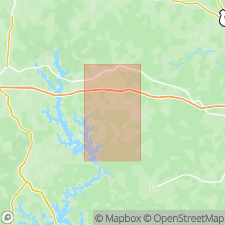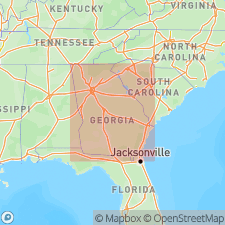
- Usage in publication:
-
- Siloam Granite
- Modifications:
-
- Named
- Dominant lithology:
-
- Granite
- AAPG geologic province:
-
- Piedmont-Blue Ridge province
Summary:
Siloam Granite (new) is described as pink and white coarse porphyry containing pink microcline phenocrysts. Covers 100 sq mi. Youngest intrusive of the area. Rb-Sr whole-rock age is 269+/-3 m.y.
Source: GNU records (USGS DDS-6; Reston GNULEX).

- Usage in publication:
-
- Siloam Granite
- Modifications:
-
- Geochronologic dating
- Overview
- AAPG geologic province:
-
- Piedmont-Blue Ridge province
Summary:
Siloam granite described as a heterogeneous body composed of porphyritic coarse, medium, fine-grained phases, and a garnet phase. K-Ar age on biotite of 261 m.y. confirms Permian age.
Source: GNU records (USGS DDS-6; Reston GNULEX).
For more information, please contact Nancy Stamm, Geologic Names Committee Secretary.
Asterisk (*) indicates published by U.S. Geological Survey authors.
"No current usage" (†) implies that a name has been abandoned or has fallen into disuse. Former usage and, if known, replacement name given in parentheses ( ).
Slash (/) indicates name conflicts with nomenclatural guidelines (CSN, 1933; ACSN, 1961, 1970; NACSN, 1983, 2005, 2021). May be explained within brackets ([ ]).

